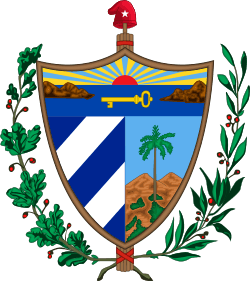Operation Ortsac
| Operation Ortsac | |
|---|---|
| Part of the Cuban Missile Crisis | |
| Location | Cuba |
| Planned by |
|
| Objective | Invasion of Cuba |
| Date | 1962 |
| Outcome | Never took place |
Operation Ortsac (Castro backwards) was the project name of a possible invasion of Cuba planned by the United States military in 1962. The codename was derived from former Cuban President Fidel Castro by spelling his surname backwards.
During the Cuban Missile Crisis, upon discovery of SS-4 missiles being assembled in Cuba, the U.S. Government considered several options including a blockade, an airstrike, or a military strike against the Cuban missile positions.
The nuclear weapons supplied from the Soviet Union could be destroyed by a military strike with the help of substantial air raids before they were operational. The plans were rejected in favour of a blockade, as U.S. President John F. Kennedy was against a sneak attack.
It can be argued that an American attack would have probably resulted in the deaths of Soviet soldiers and a retaliatory strike on another American position in the world such as West Berlin. Such moves would have possibly resulted in an all-out nuclear war between the Soviet Union and the United States.
Also, an airstrike would probably have failed to destroy in entirety all of the missiles, with many of the positions hidden to U-2 reconnaissance planes. It would also fail to prevent Soviet Premier Nikita Khrushchev from sending further reinforcements to Cuba, making a full blown military strike deposing Castro necessary to prevent further missiles from being placed on Cuba.
After the collapse of the Soviet Union, the Russians revealed that the medium-range missiles on Cuba were already almost fully operational at that time, and operational command of smaller, battlefield-tactical nuclear missiles also present had, incredibly, been given to field officers, though that authorization was quickly rescinded.
Order of battle
Cuban Invasion Force (Corps)
- 101st Airborne Division (Secure Jose Martí and San Antonio de los Baños Airfields)
- 82nd Airborne Division (Secure Mariel and Baracoa Airfields)
- 1st Marine Division (Secure beaches at Tarará)
- 2nd Marine Division (Secure beaches at Tarará)
